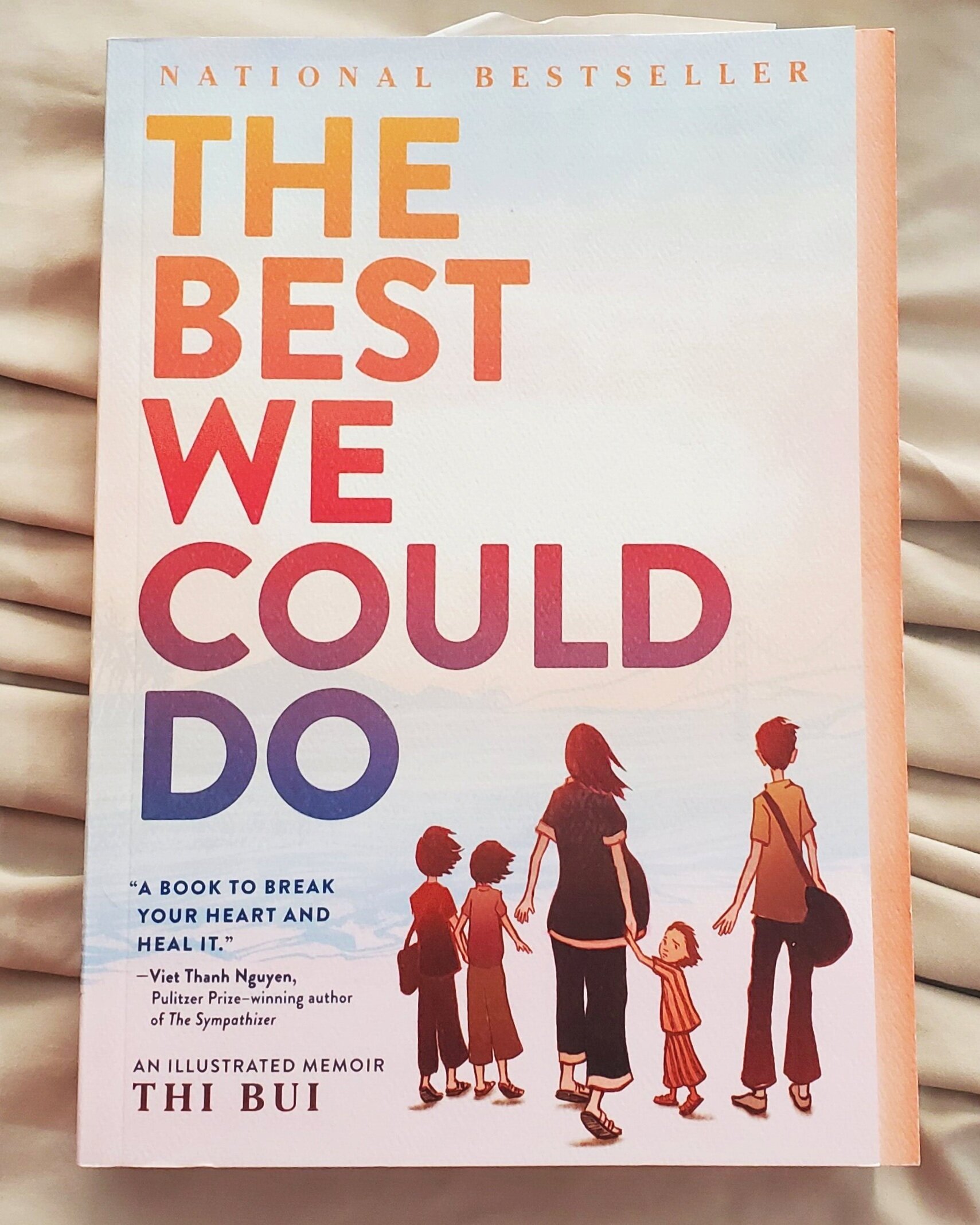The Best We Could Do
Thi Bui’s The Best We Could Do is a multifaceted narrative spanning the experiences of Bui’s father, mother, and her own experience. The book effectively shows the diverse experiences of Vietnam’s population before, during, and after the war. Bui’s mother is a child of a wealthy southern family - the father working as a civil engineer in Cambodia under French colonialism. Bui’s father’s story is more tumultuous, demonstrating the conflicts experienced by those in the North, being impacted by French colonialism, Japanese colonialism, and the continual fights for against colonialism and for revolution. After America withdraws from Vietnam, the family experiences oppression under the new regime and joins others to escape the country.
In addition to illuminating an oft misunderstood and politicized country, Bui demonstrates how the tragedies of her home country linger in the family, adding to the strain of being immigrants in the United States. She explains the conflict of being a model minority and living with the shadow of her family’s past. The book doesn’t offer easy answers to the past but tries to find ways to connect to the diverse experiences. Unlike Marcelino Truong’s texts that are packed with historical facts, Bui works through the history primarily through the pathos of the experiences of her family members, adding context when necessary but not overwhelming readers with text-book styled passages.
The representation of post-traumatic stress and depression is available for analysis in the father’s portion of the narrative. Bui’s mother could easily be considered through a feminist lens as she takes charge as Bui’s father becomes passive in American under the pain of his past. Bui’s mother seeks out additional education and works her way up from an assembly line to become a mechanical drafter.
The artwork of the piece works with pinks, blacks, and whites to tell the story. It reminds me of Alison Bechdel’s books in the use of color, but the style is more watercolor with more shading and panels sometimes feeling like they wash into each other. All of this fits in with Bui’s use of water as a place of turmoil and a metaphor for the undercurrents she’s beginning to understand more as an adult.

